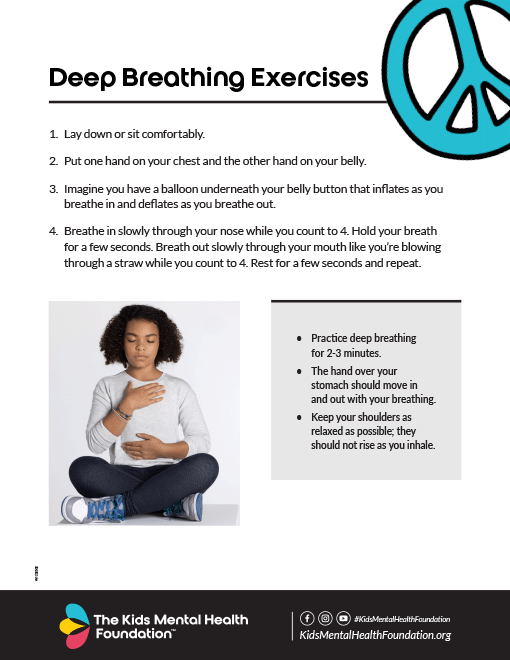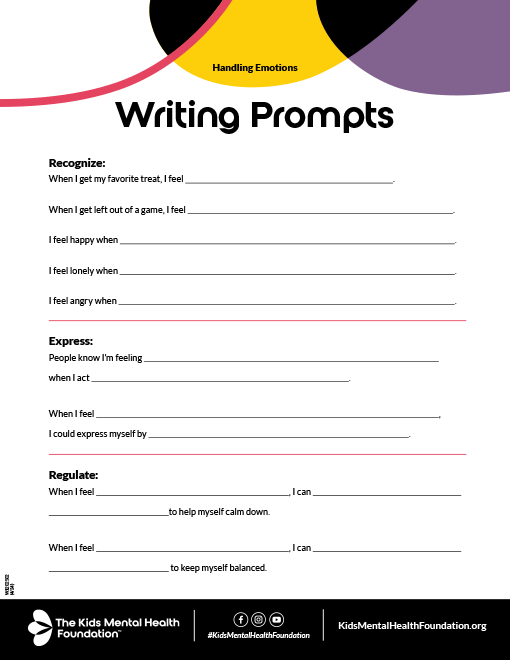- Most kids will experience symptoms of inattention, impulsiveness or restlessness at various times or in certain activities.
- If these symptoms show up often, and interfere with daily routines at home, school or work they could be indicative of ADHD.
- Ways to manage ADHD in children includes therapy, medication and school support.
Helping Kids Cope with Strong Emotions
Article Summary
- When kids can cope with their feelings it helps them control their choices and behaviors.
- Emotion regulation skills are best learned when calm.
- Coping activities include deep breathing, movement or exercise, mindfulness and meditation, listening to music and using distractions.
- Encourage children to create a calm down space filled with comforting items.
- Developing the ability to cope with strong emotions is a gradual process that requires patience and consistent practice.
Teaching kids how to cope with their emotions is one of the best life skills you can give them. This is what we call emotion regulation, and you can start the moment they’re born! Our experts recommend reading in this order:
- Naming emotions
- Noticing how the emotions feel in their body
- Expressing their emotions
- Coping with their emotions
Everyone experiences strong emotions sometimes. This is why it’s important that we teach kids skills to cope with emotions, or emotion regulation. We want children to know that while all emotions are normal and valid, we have to have control of our choices and behaviors. For example, saying things like “I know you’re angry it’s time to put your game away, but throwing your toys is not acceptable. What can you do instead?”
Emotion regulation includes naming emotions, being mindful and noticing them in the moment, and expressing them appropriately. And finally, we teach children the tools and skills they need to calm down.
How to Teach Children to Cope With Strong Emotions
The best time to learn emotion regulation is not in the middle of a strong emotion. These skills are best learned in a calm state of mind and take a lot of practice so they can be used when needed. These activities will help you teach children how to better regulate their strong emotions.
Deep breathing
Teaching children to engage in deep belly breathing exercises is one of the most straightforward and effective coping skills they can learn. Breathing allows the nervous system to slow down and gives us a pause. Remember to practice breathing exercises often and not just when a child is upset - for example, right before bedtime!
Movement or exercise
Sometimes, when we are upset, our bodies become tense and have a lot of energy. One of the best things we can do is move our body. Have kids take a walk, ride a bike or dance it out!
Mindfulness and meditation
When we feel overwhelmed, helping ourselves come out of our mind and thoughts and into the present moment is incredibly helpful. This is a hard skill to learn; even adults have a hard time! Practicing mindfulness and meditation can help children develop this skill. This Go Noodle video helps children practice allowing their negative feelings to melt away through a guided mindfulness activity.
Music (all ages)
Music has a powerful effect on our moods and emotions. Have a playlist or artist who plays music that both energizes and calms your child. When needed, have them listen to music to help their mood. If they are too energetic, play relaxing music. If they are feeling low, play something they can dance to.
Distraction
Sometimes all we need is to get our mind off what is upsetting us. Have your child choose their preferred activity for distraction -- for example, drawing, playing with slime, or watching a funny video. Once they have taken a small break and calmed down, you can return to the situation and talk about it to help them problem-solve and process.
Connect with others
Social and familial relationships are a key part of healthy emotions. Encourage your child to think of people they trust and feel comfortable talking to. Maybe even have them write a list! When feeling upset, they can reach out to one of the people on their list.
Create a calm down space
Have your child choose a small area in their home that is their calm down space. Fill a box or a basket with things that help them calm down. For example, books, coloring materials, or their favorite toys. When they are upset, remind them to take a break in their calm down space. This should not be used a punishment or time out- kids should be excited to take a break in their space.
The ability to cope with strong emotions is an important developmental process, but it takes time! Be patient with your child as they learn to pause and catch themselves when upset. Remember, this is a skill we work on throughout our life.
References
Wyman PA. Cross W. Hendricks Brown C. Yu Q. Tu X. Eberly, S. (2010). Intervention to strengthen emotional self-regulation in children with emerging mental health problems: Proximal impact on school behavior. Journal of Abnormal Child Psychology, 38, 707-720.
Wang X. Liu T. Jin X. Zhou C. (2024). Aerobic exercise promotes emotion regulation: a narrative review. Experimental Brain Research, 242(4), 783-796.
 Copy Link
Copy Link





